Ancient Kotor is one of the most famous historical places in Montenegro. The location, landscapes, rich historical heritage and status of UNESCO makes it a must-see sight for everyone visiting the country.
Kotor used to be the only Montenegrin city visited by cruise ships on their voyages through the Adriatic and the Mediterranean. Now some ships call at the port of Bar.
Geographical location and climate
Kotor is settled in the corner of the bay, on a cliff of Pestingrad mountain, about 1 kilometer high. The Bay of Kotor — Boka Kotorska — is often called the southernmost fjord of Europe due to the visual similarity with the Norwegian fjords, but the origin of Boka is a former river canyon. Boka Kotorska consists of several bays interconnected by narrow straits. Kotor is outlined by the cerulean sea and the high moody mountains of the Lovćen and Vrmac massifs.
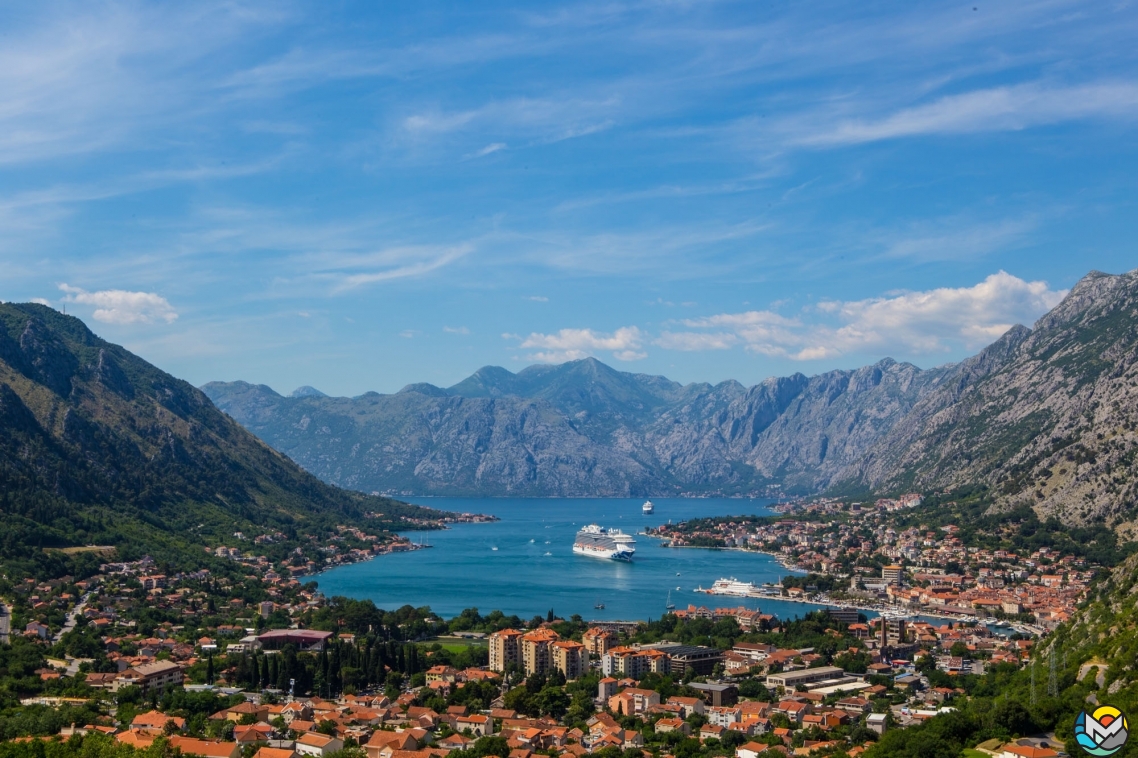
Kotor is connected with other cities at the bay — Perast, Risan, Herceg Novi — by a road along the coast. An old panoramic yet fearsome road leads to Cetinje through the Lovćen National Park. A tunnel cut in the mountain of Vrmac will get you to Tivat, the airport and the seaside towns.
The weather is typical for the Mediterranean coast, hot summer and humid winter, but it rains a bit more often in Kotor, and in winter the sun sets very early because of the mountain surrounding.
History of Kotor
The settlements have been in the area since the Neolithic. The first mention of the town dates back to 168 BC, the time of the reign of the Roman Empire. The town was called Akruvium and was a part of the Dalmatia province. Later, the Roman rule was replaced by the Byzantine, and the name was changed to Decaderon. The first fortress over Kotor was built in 535 under the supervision of Emperor Justinian. It has been invaded many times by various states and tribes, and finally the Byzantine lost the territory in 1185.
Kotor surrendered to the Serbian Grand Prince Stefan Nemanja, founder of Nemanjić dynasty, and became a vessel state, but retained most of its sovereign functions. Serbian rule lasted until 1371. It was a time of the great prosperity. Catholic religion and an active commerce gave a boost to local economy and culture.
In 1241 Kotor was burned to ashes by troops of the Mongol commander Kadan, the grandson of Genghis Khan.
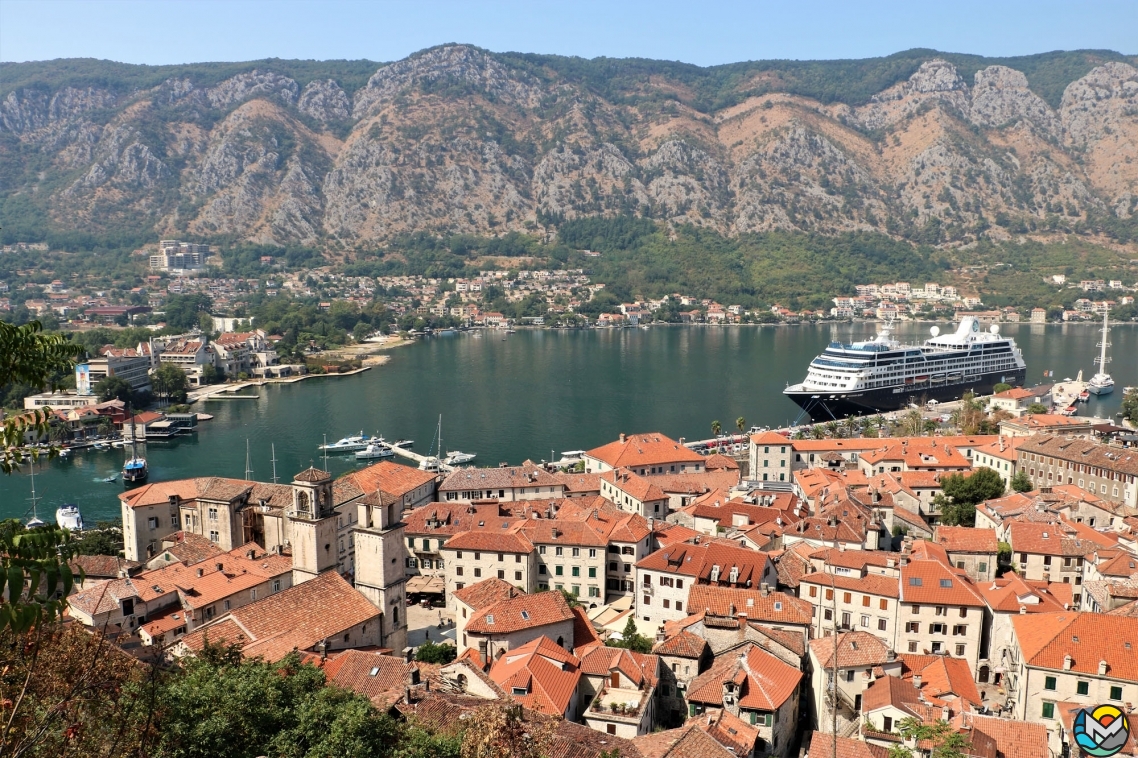
After the Nemanjić regime, from 1371 to the middle of the fifteenth century, Kotor was either an independent republic, or under protectorate of Bosnia, Hungary or Croatia.
Later, the city, as well as almost entire Balkan Peninsula, was fighting the Ottoman Empire. And Kotor and neighboring Perast, unlike the other parts of Balkans, were never ruled by the Turks.
In 1420, the Kotor City Council voluntarily accepts the protectorate of Republic of Venice. The city is called Cattaro, and the bay is Bocche di Cattaro. Now Venice confronts the Ottoman Empire at the bay. The local cities like Herceg Novi and Risan passed to the Turks, but Kotor and Perast never gave up.
For nearly four centuries, until 1797, Kotor stayed under Venetian influence. Because of that, we can admire Venetian-style palaces and churches nowadays in the Old Town.
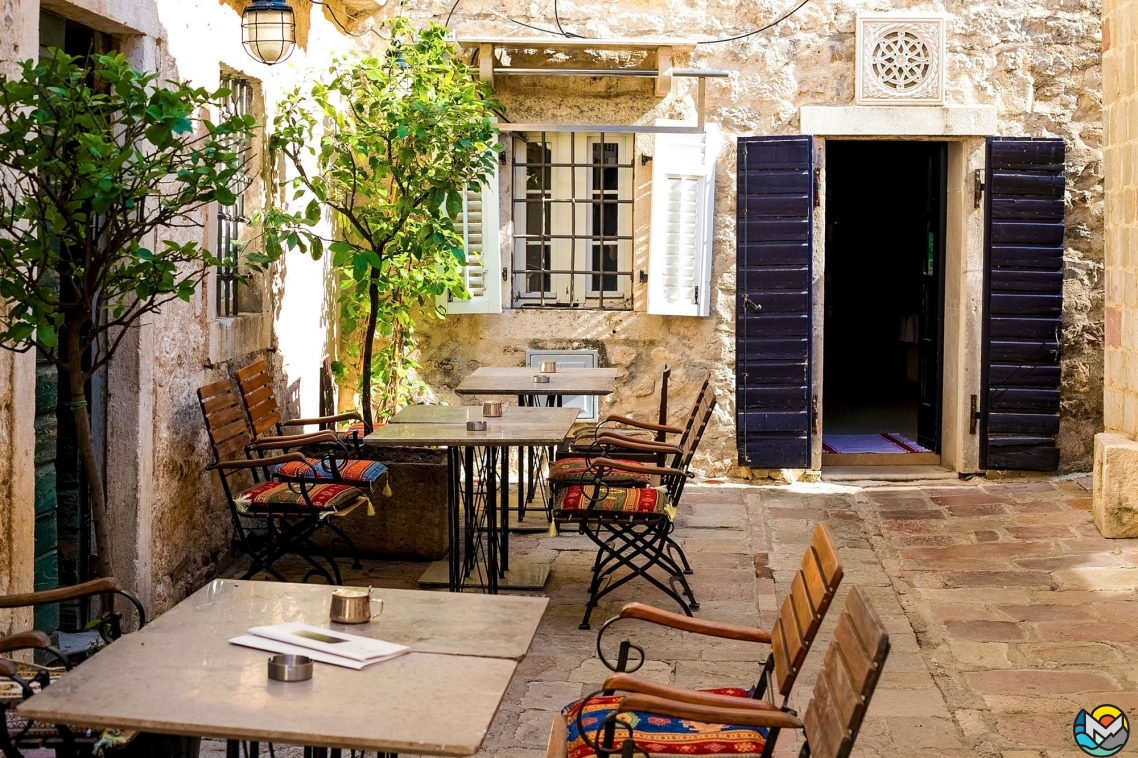
During the Napoleonic wars, the city was occupied by France, and under attack of the British Navy. The citizens turned for help to Montenegrins, to Petar I Njegoš (Montenegro, with the capital in Cetinje, then bordered with Boka Kotorska). Negosh appealed to the Russian Empire, and in 1806 Russian ships led by Admiral Dmitry Senyavin, invaded Kotor without a fight, to the great joy of civilians. However, in 1807, the Russians had to leave, and Kotor was taken by the French again, until 1813, when the Montenegrin ruler Petar Njegoš knocked them out.
For a short time, Montenegro was granted access to the sea, but in 1814, by decision of the Congress of Vienna, Boka Kotorska became a part of the Kingdom of Dalmatia, the protectorate of Austria-Hungary.
The Austro-Hungarian rule, which lasted until 1918, was marked by constant riots among the local population, especially the Orthodox Serbs. During the First World War, the sailors at the Austro-Hungarian Navy ships — Serbs, Croats, Slovenes, Hungarians — raised a red flag and demanded the peace treaty. The revolt was brutally suppressed, but this heroic event — Pobuna mornara u Boki — is still celebrated at the bay of Kotor.
In 1918, after collapse of the Austro-Hungarian Empire, Kotor and Boca entered the Kingdom of Yugoslavia.
During the World War II, the city is under Nazi invasion until 1944, when it was liberated by the local partisans. After that, Kotor became a part of the Socialist Federal Republic of Yugoslavia.
In 1979 a calamitous earthquake caused a destruction of households, cultural monuments and works of art. Many people lost their lives, and even more lost their homes. The Old Town was severely damaged, but later rebuilt stone by stone.
After this tragedy, the World Heritage Committee of UNESCO decided to list the Natural and Culturo-historical Region of Kotor in the World Heritage List and in the List of World Heritage in Danger.
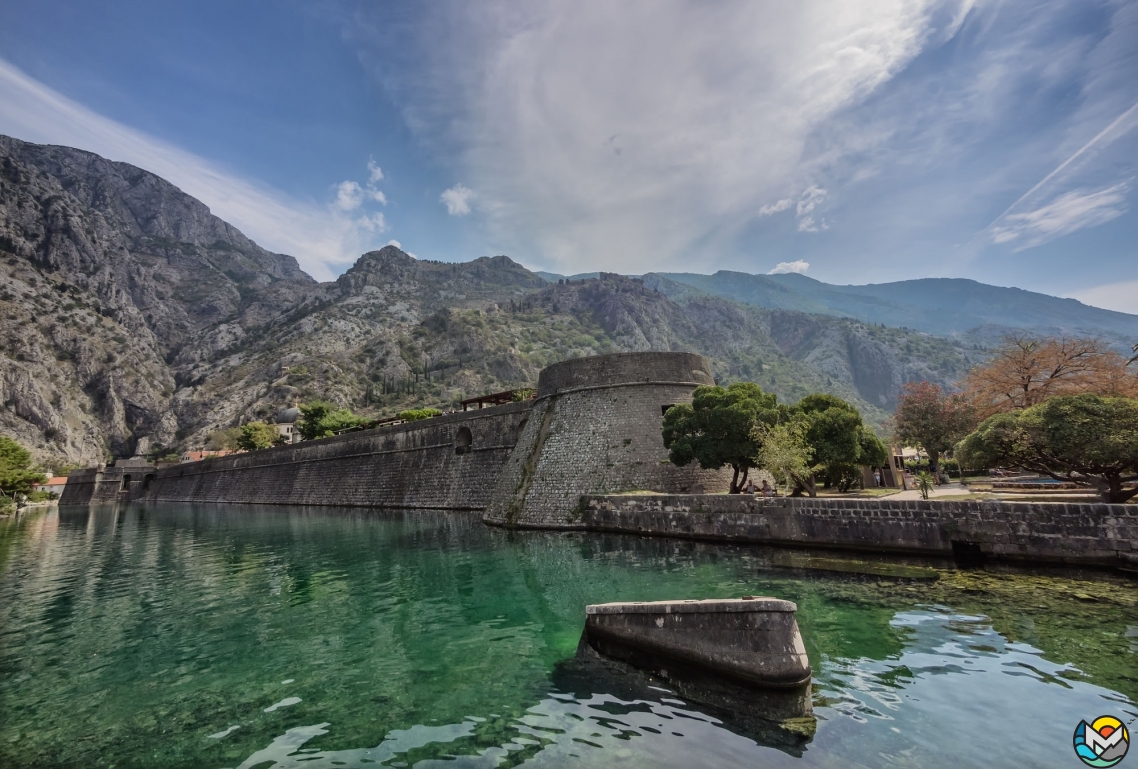
Nowadays Kotor is a municipal center in the Republic of Montenegro.
Dramatic history of the city left its mark on culture, traditions, and religion of the local population. Bokelj even have their own dialect with a large number of Italian words.
Orthodox Christianity and Catholicism coexisted peacefully here for a long time. The city is so ancient, that a first church was built here in 809 in honor of St.Tryphon. He was simply a Christian, since the split into Orthodoxy and Catholicism occurred later, in 1054. In place of that temple now stands the impressive St.Tryphon Cathedral.
During the Venetian rule, Kotor population was predominantly Catholic, but over time the proportion of Orthodox grew significantly and now prevails.
The Roman Catholic Diocese headed by the Bishop stands here, and the city houses multiple churches of the The Metropolitanate of Montenegro and the Littoral and a non-canonical one, the Montenegrin Orthodox Church.
The tiny sweet St.Luke church has two altars — Catholic and Orthodox — standing side by side.
Interfaith marriages happen very often in the region, and this does not cause any problems.
Architecture and top sights of Kotor
The Old Town is surrounded by a powerful fortress wall with bastions, and on the north side the river Skurda acts as a natural moat. There are three accesses into the fortress — Sea (Main) Gate, River (North) Gate, and Gurdic Gate (South).
The Sea Gate — the main entrance to the city — was built in the 16th century. Historic plaque above the gate has the date of Kotor’s liberation from Nazis, November 21, 1944, as well as Tito's maxim and coat of arms. The arch walls carry bas-reliefs of the Virgin, St. Tryphon and St. Bernard.
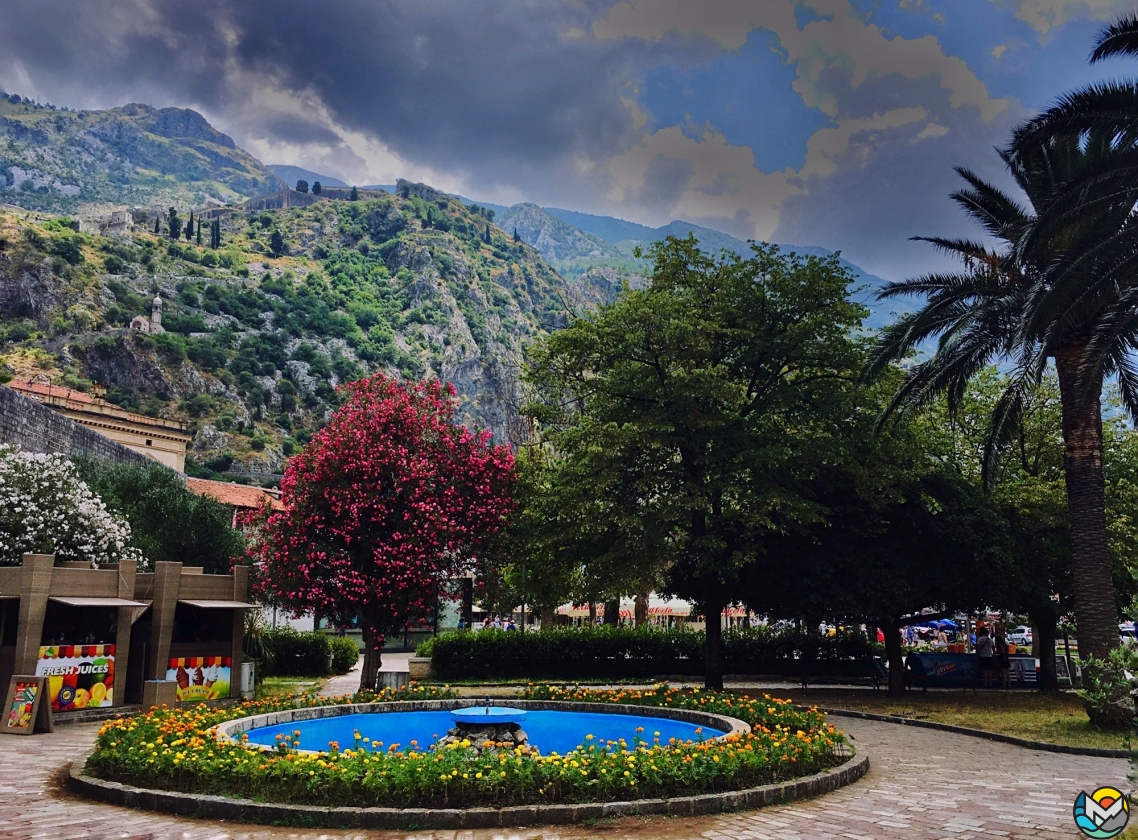
A bridge over the river Skurda leads to the River Gate. The Gate was also built in the 16th century in memory of the heroic event, when the Turkish admiral Hayruddin Barbarossa with 70 ships and 30 thousand troops tried to seize Kotor, but failed.
The Gurdic Gate is equipped with a drawbridge. The gate got its name after a small river, which flows through a cave nearby. In winter, when it rains a lot, the water in the cave is fresh, and in summer the cave is filled with salty sea water.
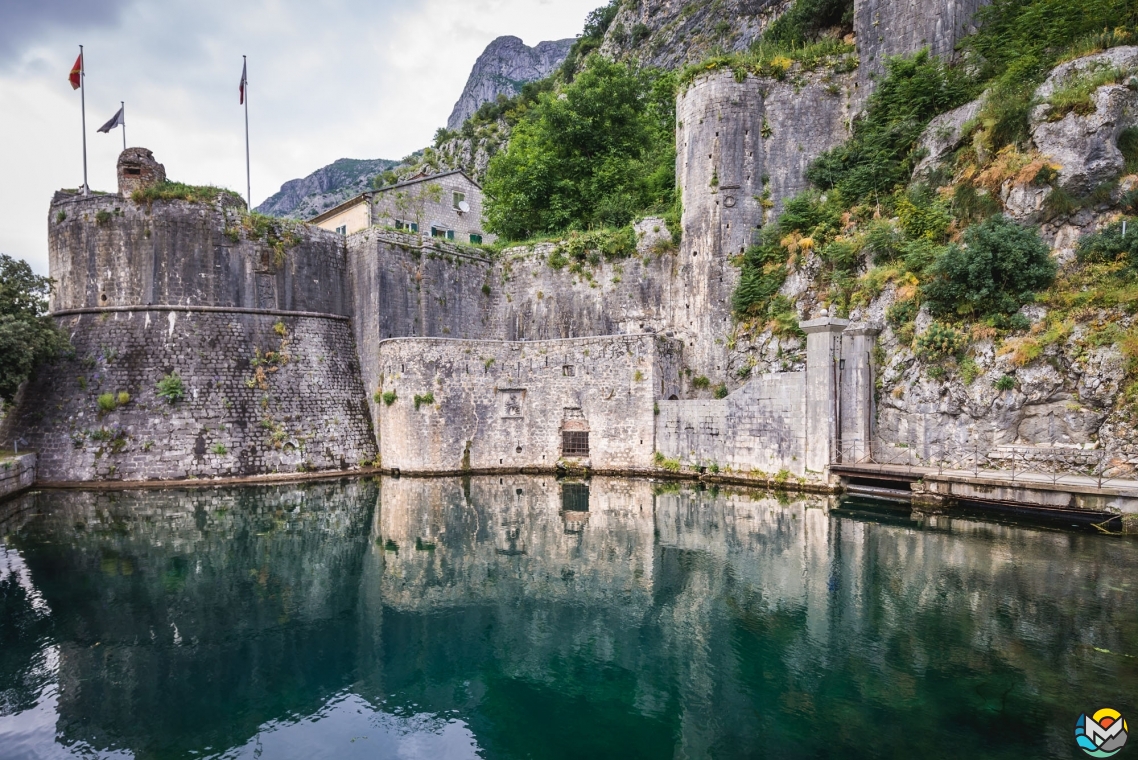
Outside the walls of the old Town, between the Sea Gate and Gurdic gate sits an old Kotor food market. The market is both a historical and practical place, where local peasants sell their vegetables, fruits and other goods for centuries. It happened outside the city walls, so wrong minded foreigners could not bring any harm to Kotor.
Passing through the Sea Gate, you get to the Weapons Square, marked by impressive tower erected in the XVII century. During the short Napoleon occupation at the beginning of the nineteenth century, the French put a clock here and it still working. At the foot of the tower stands an ancient pillory.
The square flanked by beautiful medieval buildings of Kotor arsenal; the former residence of the Venetian authorities; and the former Napoleon’s theater, which now is an elegant hotel.
Kotor always was a home of rich and prominent families, and their eye-catching mansions are the jewels of the Old Town.
On the Weapons Square rises a palace of Bizanti’s clan, famous for navigators, priests, writers, bishops. The palace was built in the XIV century, but was reconstructed many times. The building is easy to recognize, there is a post office on the ground floor.
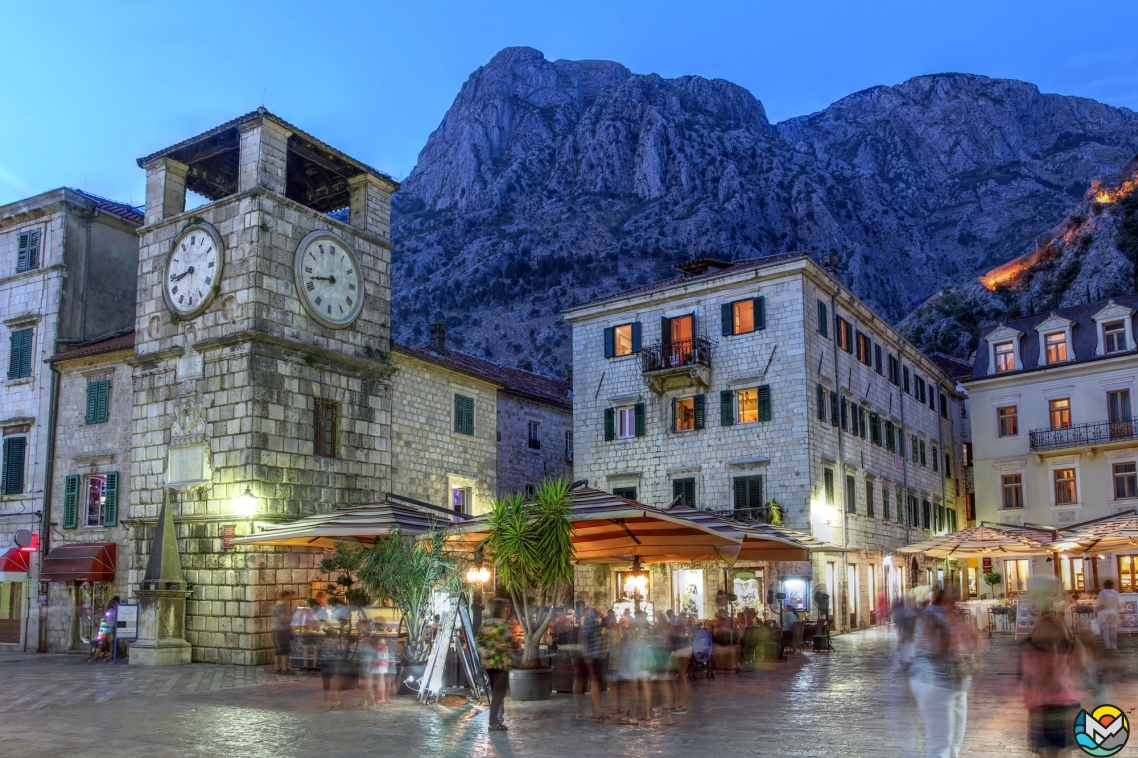
Bescuca’s Palace hides on a narrow street connecting the Weapons Square with the Flour Square. Its main feature is a marvelous Gothic bas-relief framing the entrance.
The noble Pim family constructed their home on the Flour Square in the 17th century. This amazing building combines elements of Renaissance and Baroque styles, and the windows are made in the Romanesque-Gothic style.
Kotor’s long and proud naval history is celebrated in the Maritime Museum. The museum dwells in graceful baroque-style mansion of Gregurin family. Gregurins relocated from the port of Koper, and the building is decorated with its coat of arms with the image of a goat. One of the family members, Bishop Mark Anthony Gregurin, bequeathed the palace to the people of Kotor.
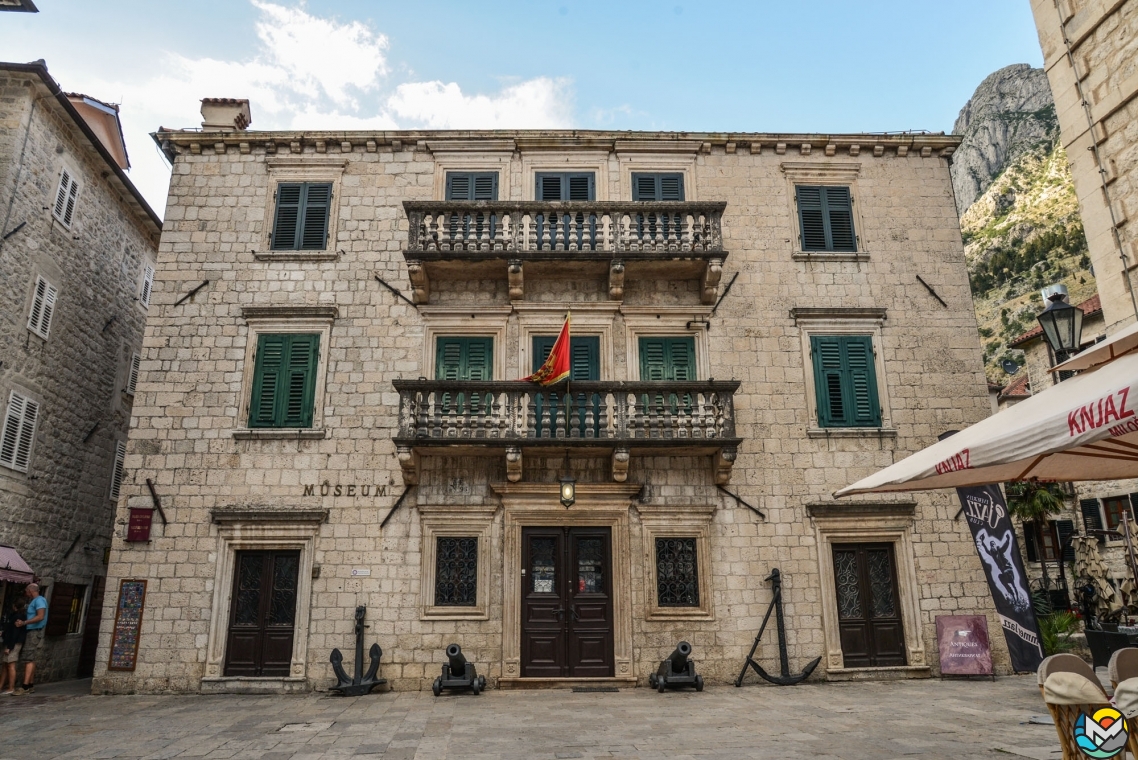
The interiors of the palace are carefully restored, you can admire them in the museum as well as naval exhibits.
Just outside the museum is another outstanding landmark of Kotor — Karampana Well with its ornate wrought-iron fence. For centuries, this well provided all of fresh drinking water to the town’s inhabitants.
The local legend tells a story about Serbian Grand Prince Stefan Nemanja and the Karampana Well. The Prince wanted to move the city up to the mountains, above the fortress. But the coastal fairy Karampana talked him out of this idea, neither the ship should land, nor the horse should drink. The city stayed by the sea and thrived, and the Prince Stefan bragged endlessly about his decision, not mentioning the role of the fairy. She got angry and turned all fresh water at the area into salty water. After many tears and apologies, Karampana gave people only one tiny well with fresh water.
The legend has variations, but the fact remains, there was only one source of drinking water, and it is difficult to overestimate.
As in support of folklore, a natural anomaly sometimes occurs in Kotor in dry summer season, the sea water passes to the city’s freshwater supply. Salty water comes from tap, recalling the offended Karampana.
-
The oldest palace in the Old Town, which has survived to this day, is the home of the grand Drago family, which was built in the 12th century. The palace has two wings, created in different architectural styles, Gothic and Baroque. The palace sits on St.Tryphon Square and houses now the Institute for the Protection of Cultural Monuments.
The Vrakjen Palace on the Salad Square makes an appearance in the novel "A Writing Box" by the famous Serbian writer Milorad Pavic.
"Following the extended key, I found myself in a small area. It was, as it turned out, the Salad Square, here stood the abode of his ancestors — Kotor’s Doctor’s mansion. It has number 299.
... For a moment, we lingered under the family coat of arms. Above our heads, two stone angels were holding a crow on a golden crossbar ... The walls of the house were decorated with brick-colored plaster..."
As said in the novel, the walls of the palace, built in the late Baroque style, are still painted in orange, and you can see the coat of arms with angels. And interiors of the palace look now as they looked in the end of eighteenth century.
Kotor’s plaza Trg Svete Gospe od Andela, or in common use, the Cinema Square, has the only large tree in the Old Town. In 2013 a unique Cats Museum opened here, a homage to city’s whiskered inhabitants.
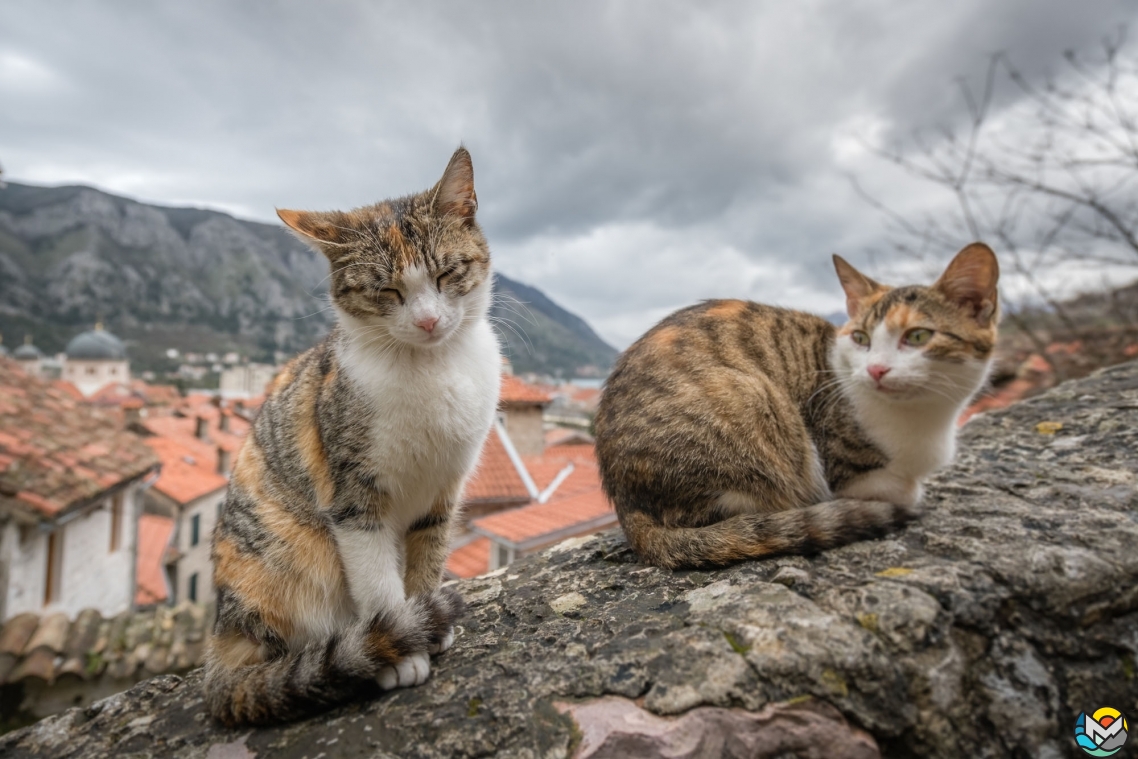
The exposition consists mainly of postcards, stamps, souvenirs, photographs, old pictures, statues, coins, medals, dishes and other items with the image of cats. Adult ticket costs 1 euro and any small donation is appreciated, all the money go towards taking care of the homeless animals.
Cathedrals and churches
The majestic Cathedral of St.Tryphon, built in the Romanesque style, rises on the square of the same name — St.Tryphon’s Square.
As already mentioned, the first small temple on the site of the Cathedral was built in 809. The relics of Trifon of Phrygia, who is considered the patron saint of Kotor, were stowed here. The construction of new, more spacious church began in 1124, and lasted until 1166.
Over the centuries, the Cathedral was rebuilt and repaired several times, mainly because of devastating earthquakes. It acquired its more or less present appearance in the XVIIth century. It is a three-nave basilica with two bell towers of different heights, 25 and 33 meters. The reason for this asymmetry was very prosaic, insufficient funds.
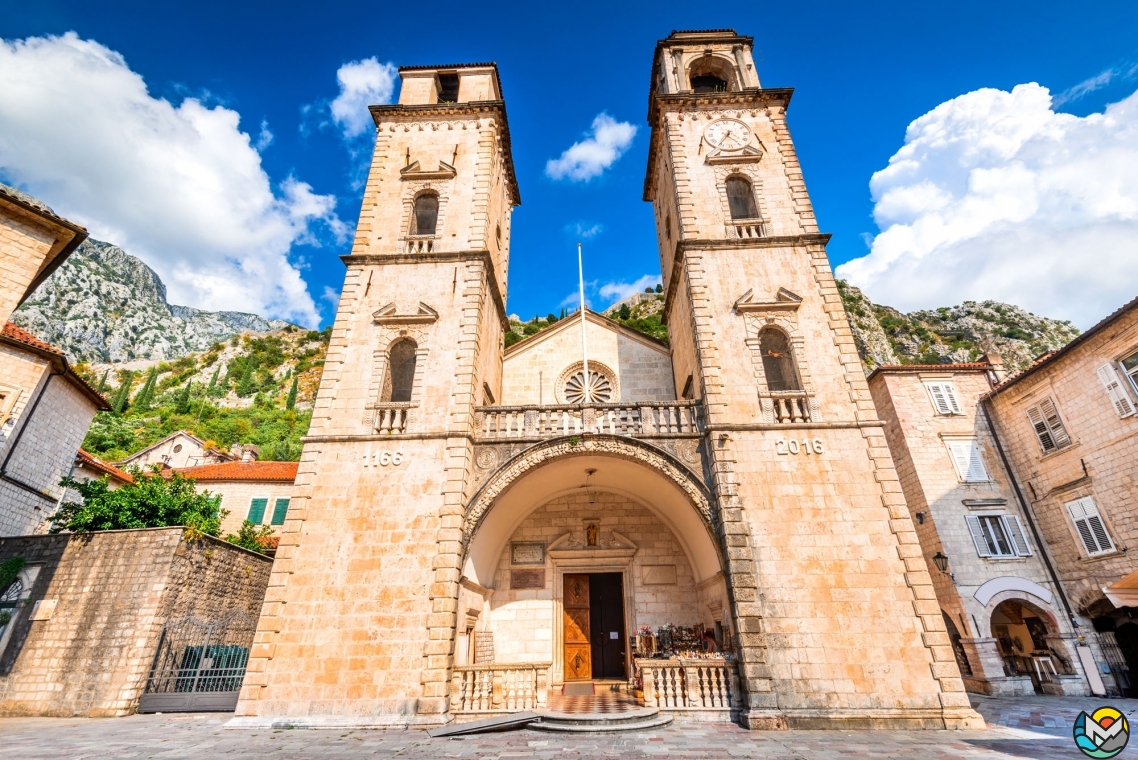
The silver bas-relief altar of the Cathedral is one of the country’s most valuable treasures. Amazing Greek frescos adorn the walls. The remains of Andrija Saracenis, a citizen of Kotor who bought the holy relics of St.Tryphon for the city rest here peacefully.
Upstairs is a Sacral Art Museum, filled with paintings and various religious objects.
The Cathedral belongs to the Kotor Catholic Diocese, which is headed by Bishop Ilya Yanich nowadays.
An interesting ancient city’s tradition: the Bishop of Kotor receives a big cake from parishioners each year on a St.Tryphon's Day.
Now the Cathedral is listed as one of UNESCO World Heritage Sites.
The Church of St.Nicholas in Kotor is a large Orthodox church, a part of Eastern Orthodox communion.
This rather modern church — the construction ended in 1909 — stands on a place of a Dominican monastery and a small Orthodox church.
The temple is built in the Byzantine style by a Croatian architect Ćiril Iveković. Four huge canvases depicting evangelists, is a gift from Russia.
Next to the Church of St.Nicholas is a tiny unique church of St.Luke. It was constructed in the XIIth century as a Catholic temple. From 1657 until 1812 two altars, Catholic and Orthodox, stood here side by side. And after it was given to the Orthodox Church.
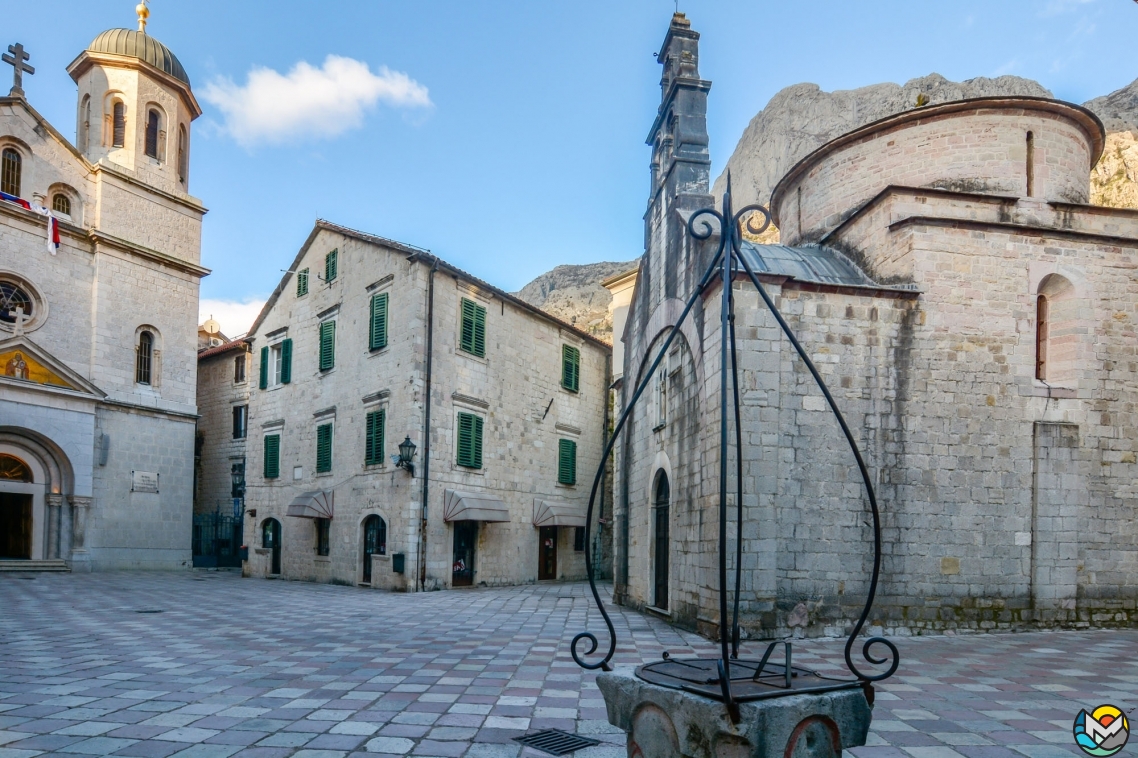
Fragments of the ancient frescoes still visible inside, the Church of St.Luke was one of the few buildings not damaged by 1979 earthquake.
Built in 1221 on a side of the VI century temple, the Catholic Church of St.Mary Collegiate sits by the North Gate of the Old Town. It houses the body of Blessed Osanna of Cattaro (1493–1565), the Catholic visionary and anchoress.
The church is constructed in the Romanesque style, western facade is decorated with the monumental bronze doors, made in 1989, with images of Osanna and scenes from her life.
Blessed Osanna was born into an Orthodox family in a small village in 1493. The lonely and quiet girl developed the habit of spending her solitary hours in prayer. Her visions led her to Cattaro, where she converted to Roman Catholicism and took the name Katarina. In her late teens, the girl decided to live a life of an anchoress. She was walled up in a tiny cell near the St.Bartholomew Church. It had a window so she could hear Mass and talk to people. When the city was attacked by Khair ad-Din Barbarossa, the citizens of Cattaro turned to Katarina for help. They credited their fortitude to her prayers and counsel. For her pious life, Katarina was beatified in 1927 by Pope Pius XI.
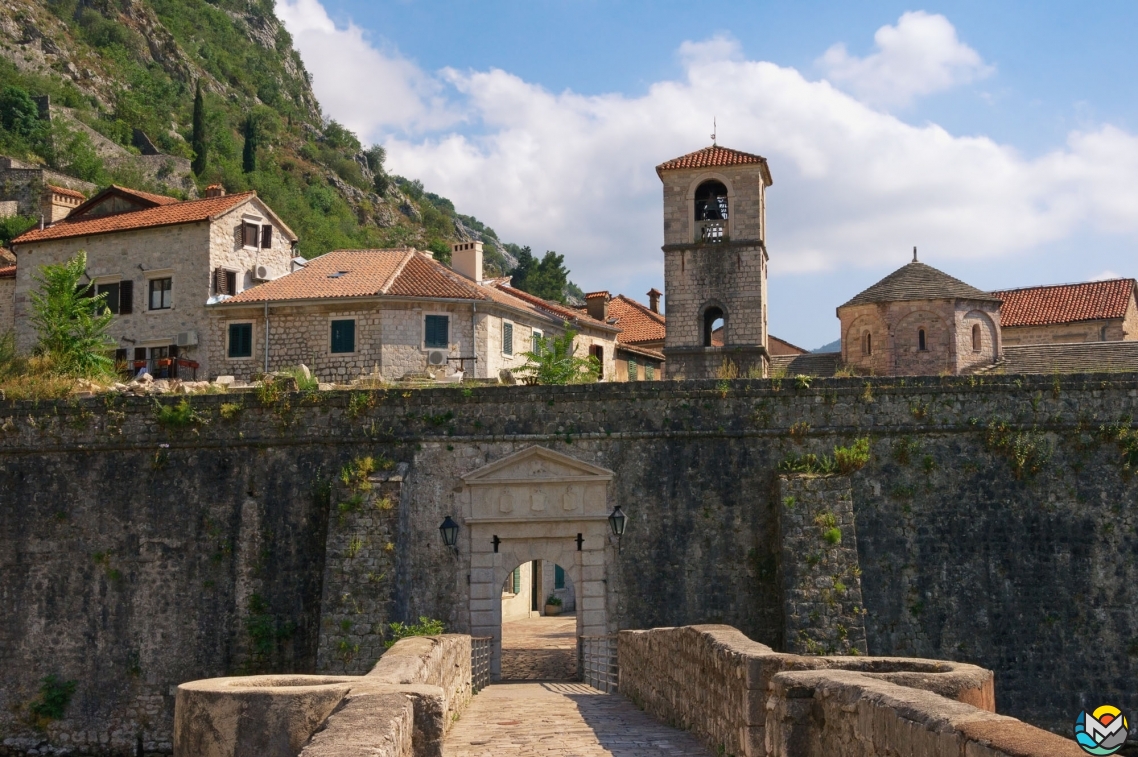
A charming feature of the square around the Church of St. Mary Collegiate — the Wooden Square — it is an officially authorized feeding place of the numerous cats of the city.
The walls of the Old Town and the Fortress of San Giovanni
The ancient walls rise up from the sea to 280 meters (306 yards) into the mountains to the magical castle of San Giovanni.
The first fortifications existed at the Illyrian era, and later they were rebuilt and upgraded by the Byzantine emperor Justinian. The Venetians completed the project over the centuries, and the fortress stayed at service even during the First and Second World Wars.
The length of the fortress walls is 4.5 kilometers (2.8 miles).
The massive Bembo bastion at the North (River) Gate now a summer theater. The view from the top to the inner city and the mountains and river will make your heart sing.
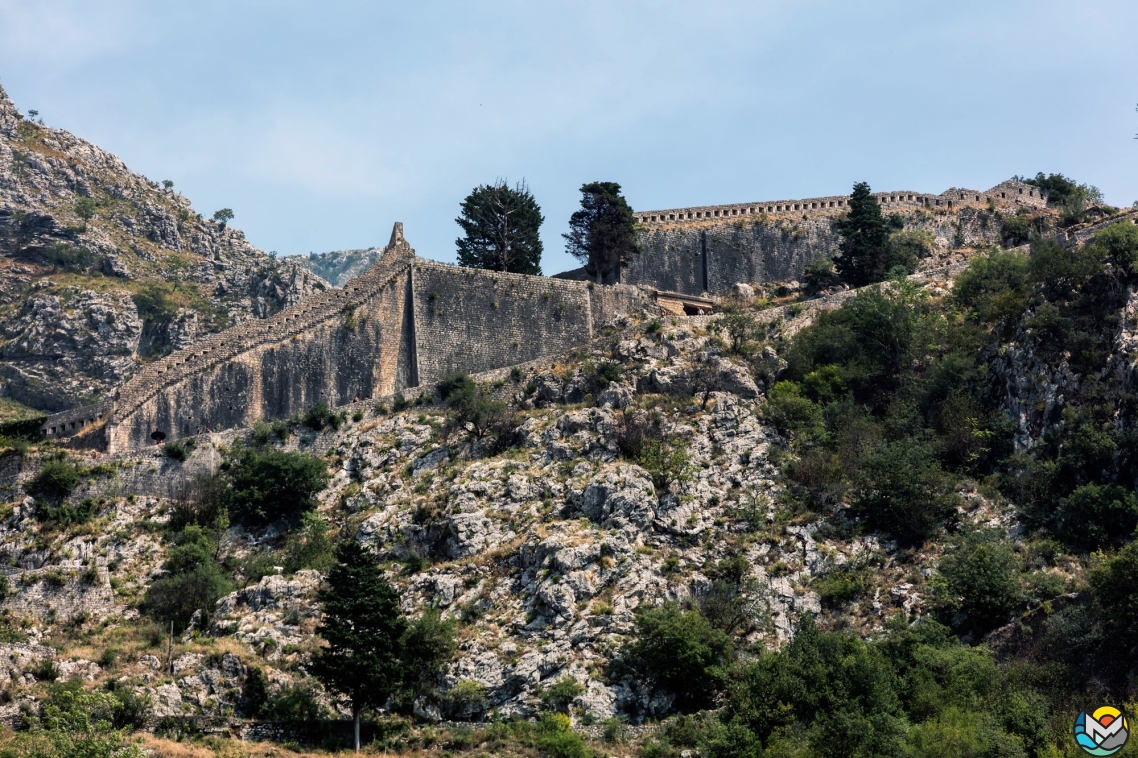
Also on the northern side, the skilfully built Riva bastion supports the hefty walls.
The round Citadel on the side of Skurda river, closer to the sea, once was a separate rampart. It is also called Campana — bell in Italian — for it unusual shape.
The monumental — about 20 meters thick — walls of the San Giovanni castle carried 38 cannons in the olden days, so the approaches to the city were completely protected.
Climbing up to this fascinating castle is one of the most popular tourist activities in Kotor. There are 1,300 steps, and each and every step offers unforgettable panoramic views of the city and Boka Kotorska. The fortress is illuminated at night, the lights and their reflection in the dark sea form a shining heart — the marvelous detail noticed by many tourists and photographers.
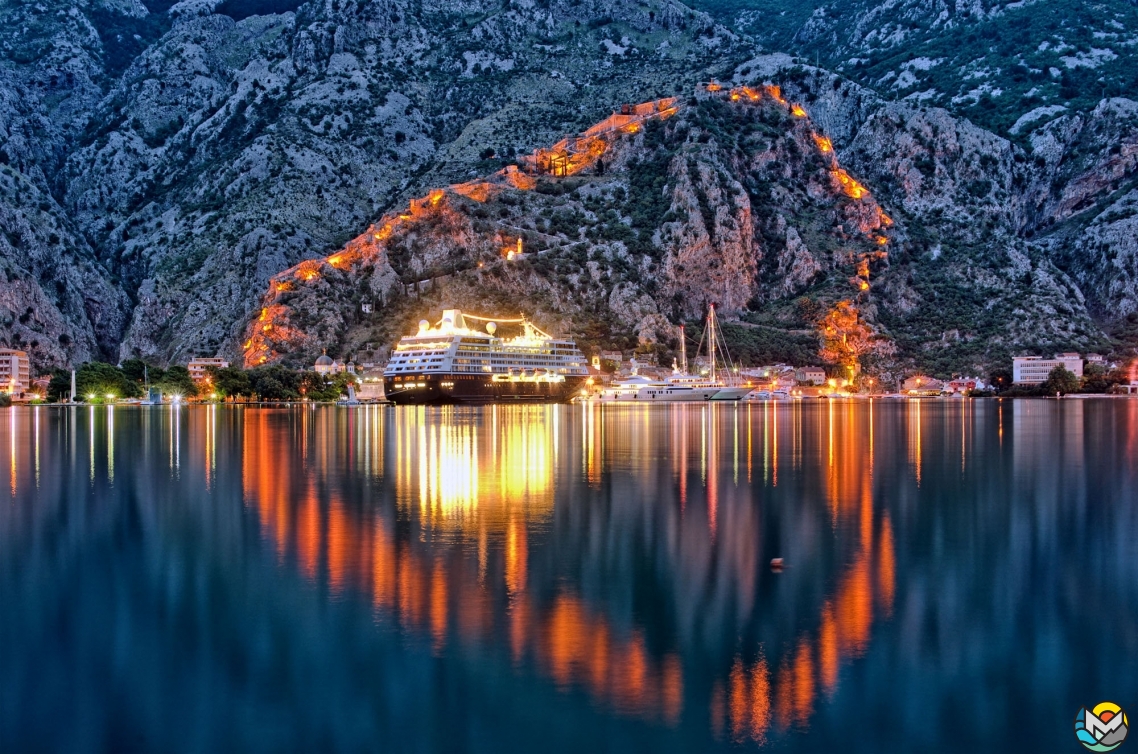
Together with the Old Town and its natural surroundings the fortifications were inscribed in the list of UNESCO World Heritage Sites labelled Natural and Culturo-Historical Region of Kotor.
Any tourist wishing to climb the San Giovanni should consider a few important things.
The climb takes about 2 hours for a person of average physical fitness; it is better not to go at the hottest time of the day if it is summer, and in winter season it gets dark very early in Kotor.
Take enough drinking water with you, since there is no cafe or recreational areas at the top. Comfortable shoes as well as a hat and other sun protection are a must.
On a way to the castle stands the Church of Our Lady of Remedy. It was constructed after a horrible plague epidemic that threatened the city at the end of the 15th century. The oldest known building in Montenegro — Christian basilica — dating from the 6th century, has been found under the Church of Our Lady of Remedy.
You can climb to the fortress by two stairs, one at the North Gate, and the other by the Salad Square. A ticket costs 8 euros.
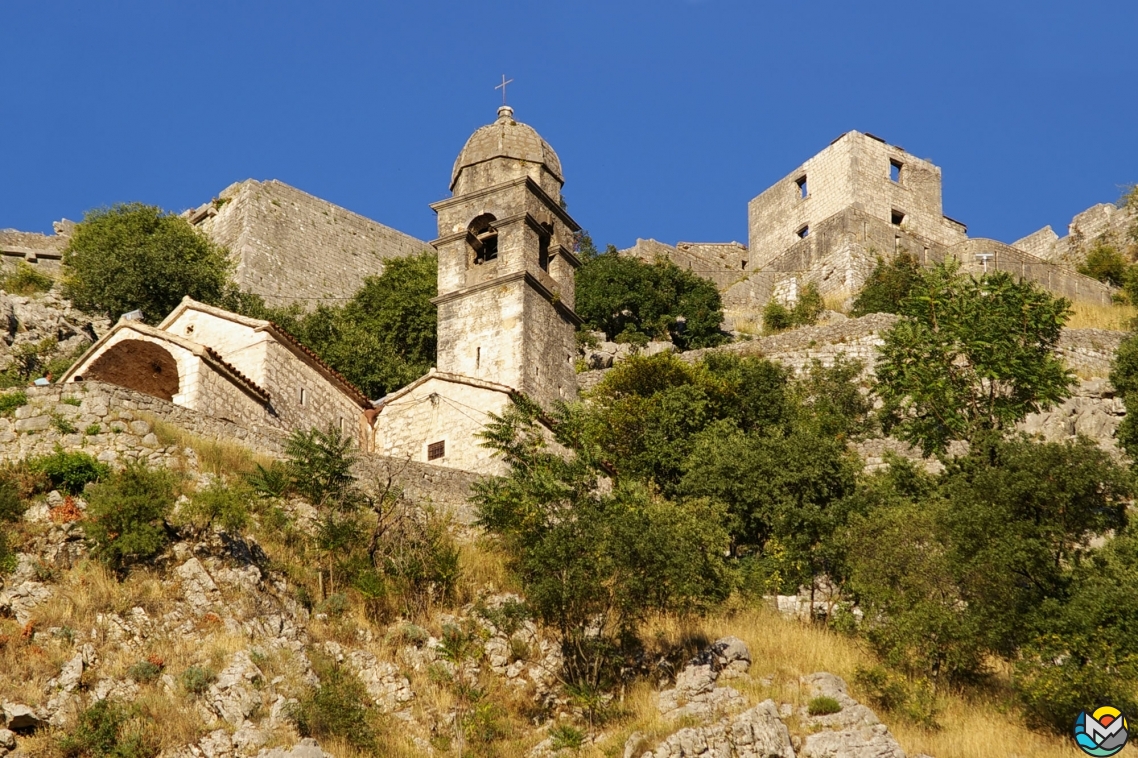
Festivals and Events
Kotor is an important cultural center of the region.
In winter and summer it holds two big Carnivals. They last about a week and include concerts, theatrical performances, and of course, a tribute to the Venetian tradition — colorful masquerade processions.
The Summer Carnival is primarily for tourists, who flood Kotor at this time of year. The Winter Carnival, which takes place right before the catholic Great Lent, is a joyful time for locals.
The International Kotor Art Festival continues for almost two months. The entire city turns into a gallery and a theatrical scene.
One more reason to visit Kotor in August — an amazing Boka Night. Decorated boats light up the bay, fireworks explode at the sky and locals and tourists are parting eagerly.
A few times a year — on January 27, the Day of St.Tryphon, on June 26, The Day of Boca Navy, on November 21, the Kotor Day — the city hosts Kolo Bokeljske Mornarice, a traditional dance performed by the sailors dressed in traditional costumes.
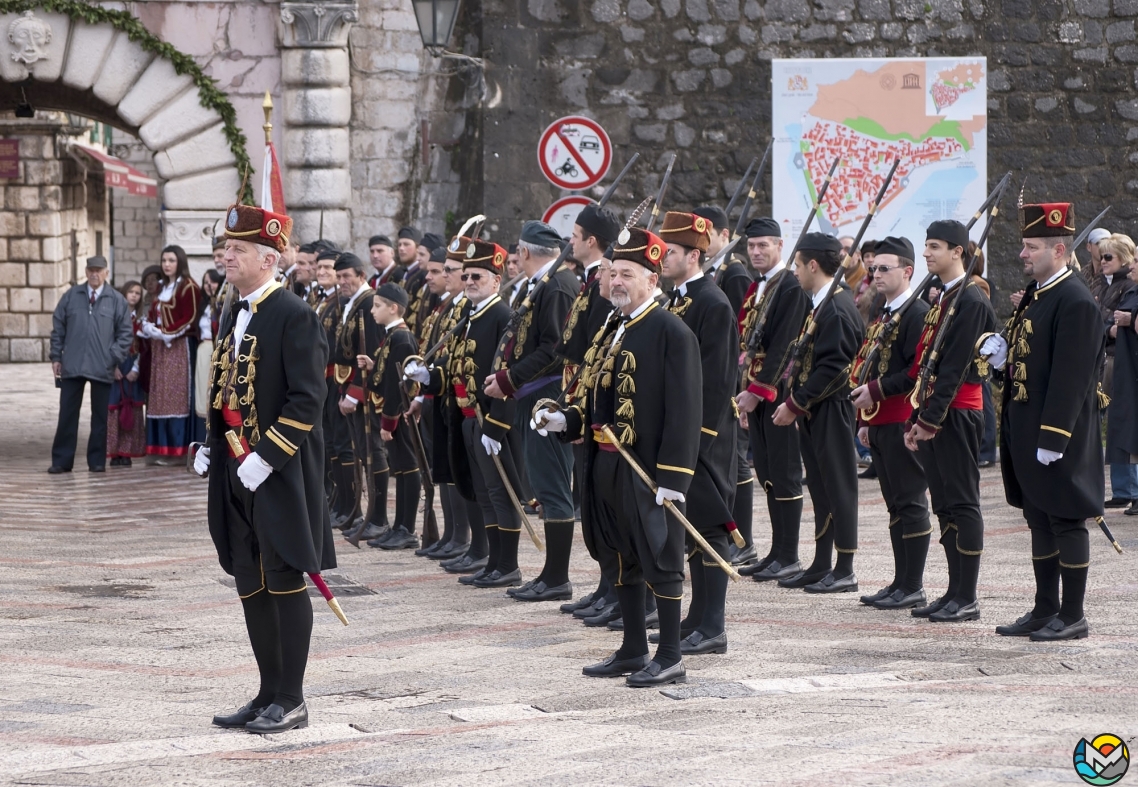
All year around, concerts, festivals, theatrical performances, art exhibitions happen in the ancient city.
Recreation
Despite its serious reputation of the historical site, Kotor offers many opportunities for sport and outdoor activities.
The international triathlon competition — Ocean Lava Montenegro — been held here for many years. The city has its own triathlon club.
The Kotor-Lovcen-Kotor mountain marathon has become traditional. It provides trials of different lengths and complexity for both experienced athletes and ordinary lovers of mountain walks.
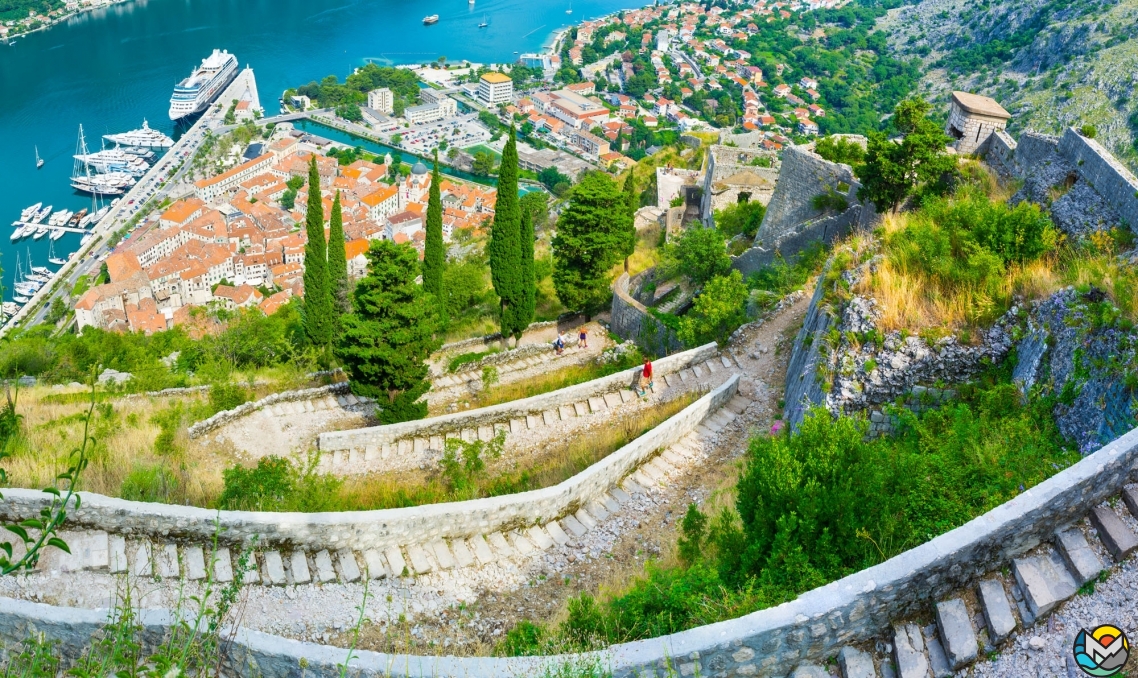
Kotor’s Mountain Climbing Club Vjevjerica organizes hikes and walks all year round for children and adults, locals and visitors.
There are no beaches near the Old Town, but plenty around the city, and tourists enjoy boat trips and excursions from the city port.
Eating and Shopping
Charming little shops on the streets of the Old Town offer decorative objects, textile and souvenirs created by the local artists. Visit lively food market for local delicacies, oil, honey, pršut, olives and figs.
There is no big malls or brand name retailers. The only sizable shopping center, Kamelija, is located outside the city walls, across the Skurda river. There is a grocery, pharmacy, cosmetic shop, some clothing shops, cafes and children’s playroom.
Be sure to bring a good appetite with you, the choice of restaurants and cafes in Kotor is endless (although many of them open only in the season).
Outside the walls of the Old Town, near the Main Gate, is a coffee named Dojmi, which is the best place to watch hordes of international tourists, impressive cruisers stop by as well as the cerulean sea.
The oldest eatery in Kotor by name of Konoba Scala Santa is settled on the historical Salad Square. It offers traditional meat and seafood dishes, and, luckily, open all year long.
In the Astoria restaurant prepares classic Mediterranean and European cuisine with the original twist.
Pronto Pizzeria at the heart of the Old Town, prepares nearly thirty varieties of this crowd-pleasing dish.
Small family restaurant and butcher shop Tanjga has a large selection of Montenegrin time-honored fares and the portions are huge.
Right by the sea, near the port of Kotor sits a beautiful restaurant Galion. Beside the breathtaking view of the Boka Kotorska, the restaurant is famous for a excellent selection of the local wines and freshest fish and seafood.
The Old Winery bar inside the walls of the Old Town offers locally produced wines, brandy, olives and nuts.
Now finish your perfect day at Kotor at the ice-cream store Il Gelato di Salvatore on a fairy-tale Weapon Square.


